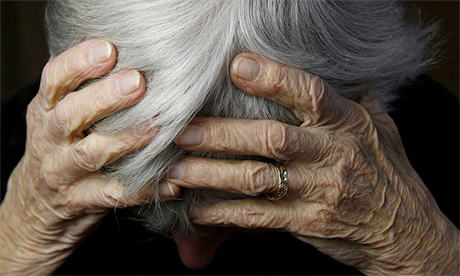It is easy to forget, when meeting older people in our lives – parents, grandparents and others – that they are so much more than what we see in front of us.
As we age, we become the accumulation of a life’s worth of wisdom and experience.
Unfortunately, the price of that wisdom is too often an increased vulnerability by other means.
Elder abuse is, in many ways, the hidden face of the domestic violence discussion Australia has been rightfully having for many years now.
Whereas we often think about it in terms of intimate partner violence, intergenerational violence and exploitation is something we are only now beginning to consider in similar terms.
Friday is World Elder Abuse Awareness Day, and perhaps there is a simple, pertinent question to put forward: are you aware that, as best we can tell, 167,000 people face some form of elder abuse each year in Australia?
I say “as best we can tell” because the data is hardly comprehensive, in no small part because of almost certain underreporting.
An older person having problems with their family may be afraid to seek help or report it, or not know where to go for help, or perhaps even not think to seek help in the first place.
Since leaving the Human Rights Commission and joining Justice Connect, I have encountered story after story of older Australians dealing with abuse in its many forms.
I’ve heard of women like Margot, a 73-year-old woman with schizophrenia.
She arranged for her son to return home to care for her, only for him to become verbally abusive, ridiculing and demeaning her in public.
She was unwilling to have her son removed from the home despite this, as it meant potentially making her son and grandchildren homeless.
I heard of a woman I’ll call Maya, who came to Australia to spend her twilight years with her daughter. The daughter almost immediately took possession of Maya’s valuables and bank account details, with which she bought herself a new car.
Under the pretext of taking her mother out for a “spin” the daughter then unceremoniously left Maya on a bench out the front of an aged care facility.
They haven’t spoken since.
These stories of abuse and exploitation go beyond more widely understood, and catalogued, tales of physical violence.
Elder abuse is a complicated issue which sits at the nexus of ageing, poverty and mental health, and it requires serious, sophisticated solutions that are sensitive to the needs of the older person.
Healthcare workers are there to meet the physical and emotional needs of older people.
But that cannot be not the whole solution.
How are these dedicated nurses, physiotherapists and social workers to deal with questions of power of attorney, property or patients being pressured to change their wills? Continue reading
- Image: Daily Caring
